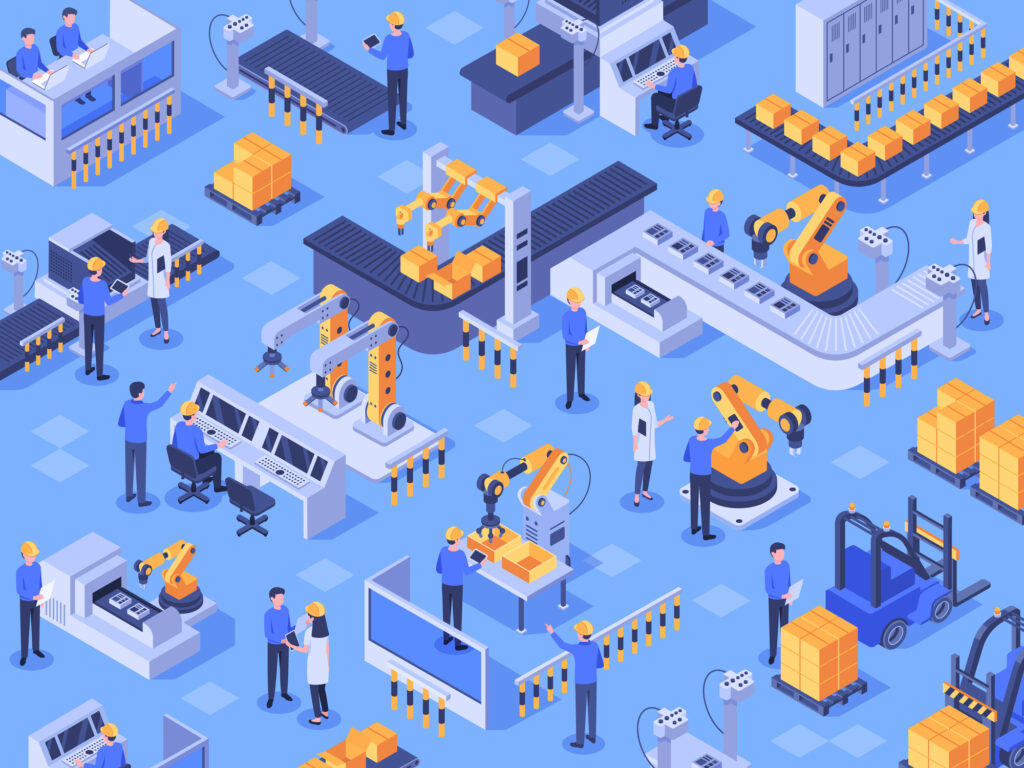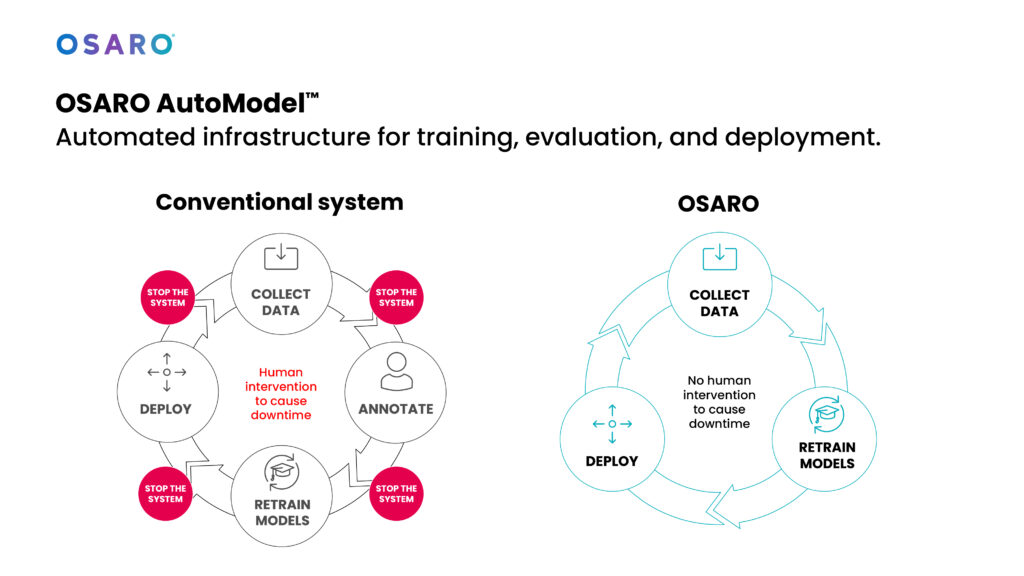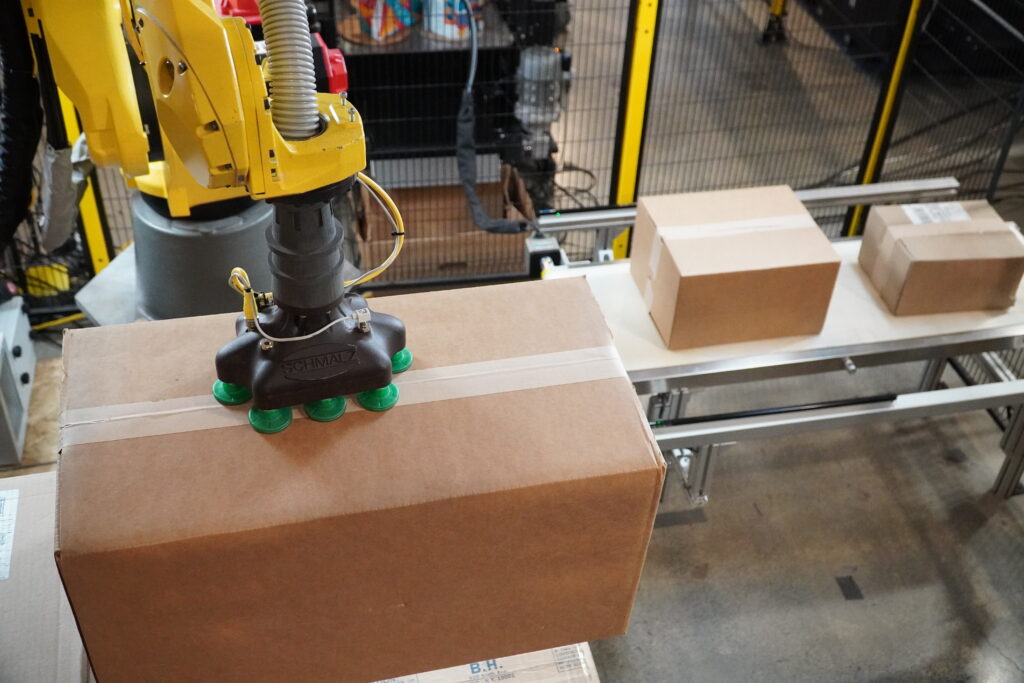
Meet our Expert
Derik Pridmore has been a leader in machine learning and robotics for nearly two decades. He is CEO and co-founder of OSARO. A graduate of MIT, he previously worked in venture capital and finance.
Three forces are reshaping the warehouse
By Derik Pridmore, OSARO CEO and cofounder
If you look across any e-commerce warehouse today, you’ll find plenty of automation relentlessly moving mountains of product. Conveyors, cross belt sorters, and AMRs have all proliferated in distribution centers. Yet, people have been essential to the last, crucial step of fulfillment – piece picking.
Now, a new generation of smarter robots is reshaping roles in many parts of the warehouse – places where the greatest gains in processing efficiency can be made: picking and placing. These robots pick to and from bins, mobile robots, automated storage systems, bagging stations, sortation conveyors, or kitting lines. Robots are also clearing giant pallets and decanting boxes.
Some 79% of supply chain respondents to a 2022 survey by the Material Handling Institute said they planned to adopt robotics and automation in the next five years. Image courtesy of OSARO.
Why warehouses are changing
Three forces are converging to accelerate the arrival of more robots in the warehouse: 1) smarter robotics, 2) an acute labor shortage, and 3) consumer expectations for faster delivery with competitive pricing.
First, AI-driven technology has finally enabled robots to meet or exceed human performance. This new generation of smarter robots can recognize and handle large numbers of rapidly changing product types with stock keeping units (SKUs). They assimilate real-time data and independently learn as they work without additional programming – allowing them to adapt on the fly as new SKUs are presented.
A collection of cameras, lights, and sensors, along with machine-learning software allow the robots to “see” — pick up and place — hundreds of different products and accurately load them into bins, packaging equipment, mobile robots, or automated storage and retrieval systems. They can choose and then switch to a new “end effector,” or picking tool, to deal with, say, a plastic package versus a fluffy toy.
Second, the manual labor to do these boring but demanding and sometimes dangerous jobs has become excruciatingly hard to find and retain. U.S. unemployment is hovering between 3.4 and 3.6%, the lowest rates in five decades.
Third, the relentless demand for e-commerce is now coupled with sky-high consumer expectations for faster delivery, cheaper packaging and shipping – and consequent competitive pricing. One important trend that aims to address those needs and drive retail sales simultaneously is an increasingly popular merchandising strategy: product subscriptions. For warehouse operators, that means providing more kitting capability.
Retailers look for ways to drive revenue and save cost
In the retail e-commerce setting, kitting is the combination of multiple products, or SKUs, into one larger order packaged in a single box. Huge e-commerce distributors like Amazon consolidate processing and reduce costs by shipping multiple, unrelated, single-order items – for example, dishwashing detergent and a tube of toothpaste – in one box to a customer on a regular basis. Consumers like the reduced packaging and automated delivery.
In addition to simply bundling multiple orders into one package, the growing merchandising strategy of subscription products also addresses a hyper-competitive market. Retailers offer curated products through repeating subscription purchase orders whose contents change regularly. The applications are many and expanding.
Top product segments for subscriptions and kitting include clothing, beauty, food, pets, baby products, and health. Consumers love the delight of receiving useful, surprising products every month. In fact, 15% of online shoppers have signed up for one or more subscriptions to receive products on a repeated basis, usually through monthly packages, according to McKinsey & Company.
A UBS Financial Services research report estimates that e-commerce subscription products will grow 25% annually from $225 billion in 2020 to $687 billion in 2025. Fulfillment centers must prepare for the growing torrent of items that will require kitting capability. Examples of subscription products include Dollar Shave Club (razors), Blue Apron (meal kits), Sephora Play! (beauty), Grove Collaborative (natural household, personal care), Lovevery, (monthly age-appropriate toys for infants and up), and BarkBox, (monthly varied dog toys, treats, and chewy bones), among others.
Kitting removes the need to pick and package each item on its own, thereby reducing time, packaging weight, and shipping cost. Typically, human workers have laboriously pre-assembled kits, so product is ready to go as soon as orders come in. It’s another job that smarter robots can handle as they adapt in real-time to the new items put in front of them.
For third-party logistics operators (3PLs) and the retailers they serve, kitting helps contain costs and boost efficient processing that can be done ahead of time. The result is less packaging, lower costs, competitive prices, faster delivery, and improved consumer satisfaction. It can also be a bonus for retailers by expanding the number of products a customer purchases and by allowing vendors to offer product that has excessive inventory.
The bottom line for e-commerce warehouse operators
Demand for e-commerce, the need to stay competitive with lower processing costs, the labor shortage, and new merchandising schemes like kitting are not going away. Some 79% of supply chain respondents to a 2022 survey by the Material Handling Institute said they planned to adopt robotics and automation in the next five years. Don’t be left behind: Now is the time to investigate how pick and place robotics can optimize your operations to prepare for future demand.
This article was first published in Packaging Technology Today, May 8, 2023
The experts at OSARO can help you optimize your warehouse navigation.




